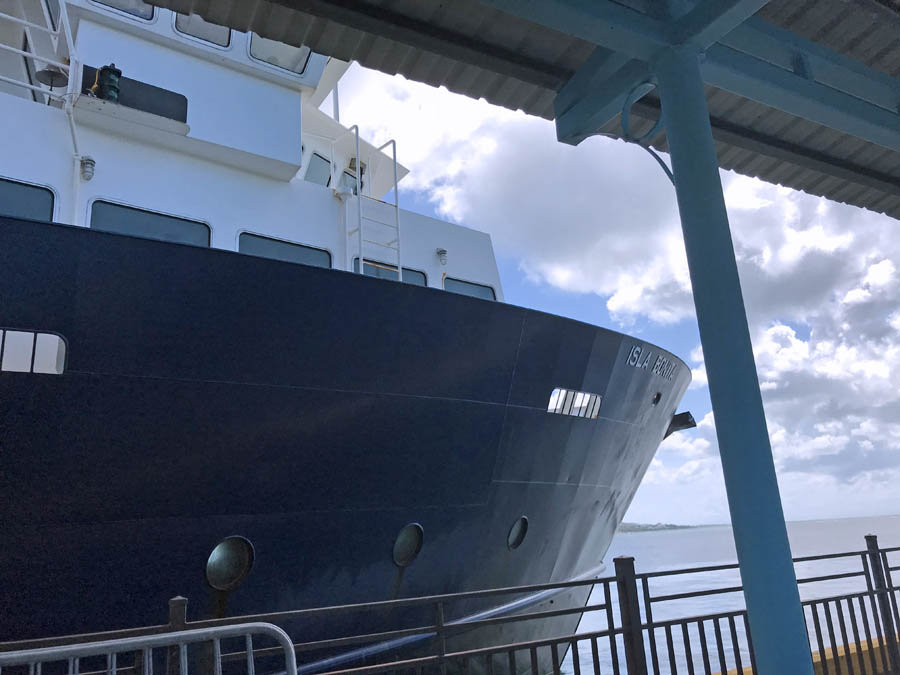Puerto Rico gov’t picks San Juan Cruise Port to run SJ piers for 30 yrs.

Government officials announced the selection of San Juan Cruise Port, a subsidiary of Global Ports Holding, as its public-private partners to repair, design, build, finance, maintain, and operate the San Juan Bay cruise terminals.
The 30-year public-private partnership agreement (P3) between the Puerto Rico Ports Authority and San Juan Cruise Port encompasses a private capital investment of more than $400 million to meet the infrastructure and modernization needs of Piers 1, 3, 4, 11 to 14 and Pan American I and II of the Ports Authority, officials said.
The selection of San Juan Cruise Port — whose general manager is Federico González-Denton — an experienced cruise ship industry executive — is the result of a procurement process that began in 2017 with the goal of addressing the historical deterioration of the cruise ship terminals and optimizing and modernizing their structural conditions, to bring them up to date with the current and future cruise ship industry standards.
This will allow increased port access in the San Juan Bay and is meant to strengthen the island’s position as a maritime tourist destination in the Caribbean, Gov. Pedro Pierluisi said.
“As a government, our main efforts and initiatives in the tourism sector includes the private sector. The cruise line industry has always been an important component of what we have to offer to the world but at this moment, we can’t compete on a large scale with other jurisdictions that are being transformed to attract more ships with better port facilities,” said Gov. Pedro Pierluisi.
“That’s why we decided to take prompt action against the evident deterioration of the infrastructure of our cruise ship docks to meet the demands of the international cruise industry. This P3 is essential to promote Puerto Rico as the main cruise destination in the Caribbean,” he said.
As part of the process under the Public-Private Partnership Act of 2009 the government’s Public-Private Partnership Authority carried out a desirability and convenience study that analyzed several options to address the cruise terminal’s current conditions.
The study concluded that a P3 “is the appropriate mechanism for the project since it allows for the capital investment necessary to bring the terminals up to world-class standards and maximize the impact of the cruise sector on the island’s economy and tourism.”
P3 Authority Executive Director Fermín Fontanés said the five-year selection process included “constant adaptation of the project to the cruise industry’s current reality. The outdated ports infrastructure we see today is the result of decades of challenges that have limited the Ports Authority’s ongoing development capacity.”
Global Ports Holding — which will operate on the island through its subsidiary San Juan Cruise Port — is the world’s largest independent cruise port operator, based in London. It operates 26 cruise ports in 14 countries, including the cruise ship terminals in The Bahamas, Antigua & Barbuda in the Caribbean; Málaga and Barcelona in Spain; and several ports in Portugal, Italy, Malta, the Adriatic and East Mediterranean and Singapore, among other destinations worldwide.
San Juan Cruise Port is a Global Ports Holding subsidiary and the entity responsible for managing and operating the San Juan Bay cruise terminals project in Puerto Rico.
Under the P3 agreement, the private operator will:
- Repair, design, construct, finance, maintain and operate the San Juan Bay cruise terminals.
- Assume all costs and expenses relating to the port facility operations, maintenance and improvements of the port facilities.
- Assume all debts and obligations relating to the facilities and its operations, maintenance, and improvements.
- “repare a Business and Marketing Plan, as well as Operations and Open Access;
- Maintain the safety of the piers and facilities at a level and in a manner consistent with Good Industry Practice and other regulatory requirements, and other requirements of the P3 Agreement.
- Satisfy key performance indicators such as: maximize the use of the terminals by attracting cruise lines and involving local stakeholders; provide Reference Services to all cruise line vessels and other shipping lines; and pay the Ports Authority an annual revenue shares equal to a minimum of 5% of the gross revenue.
Global Port Holdings CEO Mehmet Kutman said, “Our work to transform this port will see hundreds of millions of US dollars invested into the San Juan Cruise Port, all financed by private capital.”
The firm’s plans include building a new cruise pier, a state-of-the-art cruise terminal, and make significant enhancements to the public infrastructure, he said.
Transaction raises criticism
The announced P3 transaction drew criticism from Popular Democratic Party (PPD, in Spanish) Rep. Ángel Matos, who took his concerns about the government’s “festinated attempt…to privatize the San Juan cruise ship docks” to the US Department of State and the US Department of the Treasury.
“In recent weeks, we’ve requested an audience with the Treasury Department, which is led by Andrea Gacki, and with the Federal State Department, led by Antony Blinken, to deliver to them first-hand our complaints and legislative investigations into the most fraudulent transaction in history in the docks of Puerto Rico,” Matos said in a press release.
“The government insists on privatizing the tourist docks of San Juan to a privatizer that doesn’t have the economic capacity, the necessary experience and who fraudulently arrived at the Ports Authority, with money and political connections. Now they intend to take over the San Juan docks, endangering thousands of jobs in Puerto Rico, in addition to the stability of the island’s tourism industry,” said Matos, who has spent years objecting to the proposed P3 for the docks.
He said the government is privatizing “$5 billion in critical infrastructure for an initial $75 million and a chain of promises that could take the deal to only $300 million.”
Matos said he will be asking Congressman Raúl Grijalva, chairman of the Natural Resources Committee to “investigate the gravity of this transaction.”
He said meetings in Washington are planned for late August or early September.











